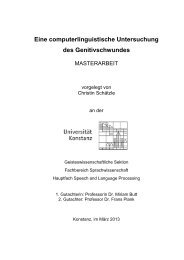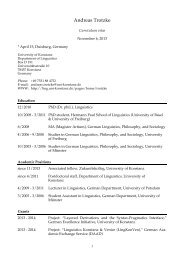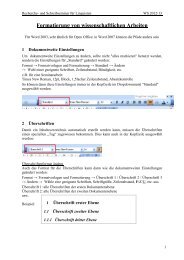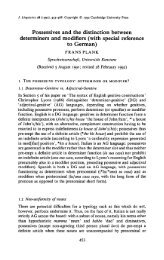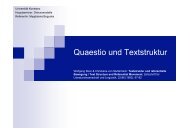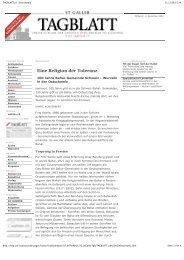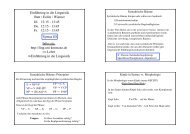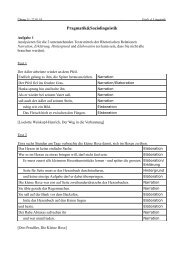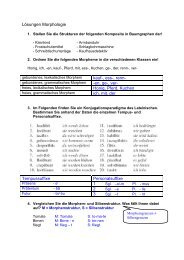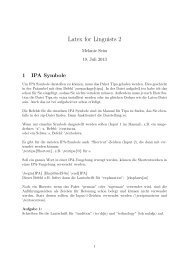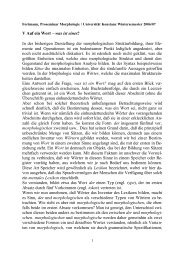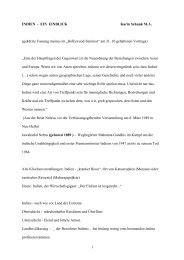5. Morphology in Relation to Phonology
5. Morphology in Relation to Phonology
5. Morphology in Relation to Phonology
Create successful ePaper yourself
Turn your PDF publications into a flip-book with our unique Google optimized e-Paper software.
F. Plank, <strong>Morphology</strong> I: <strong>5.</strong> <strong>Morphology</strong> <strong>in</strong> <strong>Relation</strong> <strong>to</strong> <strong>Phonology</strong> 33<br />
Rule-governed: It depends on stress whether or not there is a ge- present.<br />
Only verbs with stressed <strong>in</strong>itial syllable – and all such verbs – take ge-;<br />
verbs whose <strong>in</strong>itial syllable is unstressed don't take ge-.<br />
Thus, we have a phonological condition on a morphological alternation.<br />
The alternation itself is non-phonological: there are no plausible (mor-)<br />
phonological rules chang<strong>in</strong>g /ge/ <strong>to</strong> /Ø/ or the other way round.<br />
(The only exception I am aware of: gebeneDEIT; or is it: Du bist<br />
beneDEIT unter den Frauen und beneDEIT ist die Frucht De<strong>in</strong>es Leibes,<br />
Jesus 'Blessed art thou among women, and blessed is the fruit of thy<br />
womb, Jesus'?)<br />
Which raises the question of what stress itself depends on.



